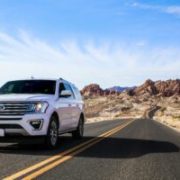Home Security On A Shoestring Budget
 Home security is essential, even if you’re on a tight budget. While monthly bills can be overwhelming, it’s crucial to prioritize the safety of your home and belongings. Thankfully, modern security companies offer affordable options to protect your home. Consider these cost-effective, tech-savvy solutions for home security:
Home security is essential, even if you’re on a tight budget. While monthly bills can be overwhelming, it’s crucial to prioritize the safety of your home and belongings. Thankfully, modern security companies offer affordable options to protect your home. Consider these cost-effective, tech-savvy solutions for home security:
- SimpliSafe: Instead of spending $1,500 on an alarm system or committing to a lengthy contract with monthly fees, SimpliSafe provides DIY home security systems starting at just $245. To save even more, you can opt for a refurbished system. At the time of writing, 24/7 monitoring starts at only $0.50 per day. You can also use the alarm locally without paying an activation fee.
- eufy SoloCam S340: A top-tier outdoor camera with solar/wireless capability, 3K resolution, full 360° pan/tilt coverage, designed to eliminate blind zones.
- Cove: A newer name in home security, Cove offers affordable, no-contract systems designed for easy DIY installation. With customizable equipment packages and simple app-based controls, it’s a great choice for homeowners who want professional-level protection without high upfront costs or long-term commitments. Cove’s monitoring plans are flexible and budget-friendly, making it an appealing alternative to traditional alarm companies.
- Arlo: With wire-free cameras and a weatherproof design, Arlo is well-suited for securing the outdoor areas of your home and capturing nighttime activities. Equipped with HD and night vision cameras, it ensures 24/7 security. You can even communicate through the cameras using the Arlo App. Receive alerts and HD video directly to your phone, allowing you to review and take necessary action. Arlo is an excellent option for DIY enthusiasts who prefer to avoid monthly fees. It includes free 7-day cloud storage.
- Ring: A video recording doorbell is a genius invention. Ring captures motion and allows you to communicate with visitors through an intercom system, even when you’re not at home. Beyond doorbells, Ring offers various security camera options. Starting at $199, it provides simple and effective security right at your front door.
- Blink: Backed by Amazon, Blink provides compact, wireless cameras that make home monitoring simple and accessible. Its devices are ideal for renters or smaller homes, offering motion detection, HD video, and smartphone notifications without complex setup or monthly fees. For those looking for a straightforward, camera-based security solution, Blink delivers reliable performance at a very affordable price.
- Roku Indoor Camera SE: Ultra-budget indoor cam, ideal for simple monitoring (kids’ room, garage, etc) rather than high-security zones.
In addition to these affordable security solutions, there are other measures you can take to enhance home security on a budget:
- Improve outdoor lighting: Well-lit exteriors can deter potential burglars. Install motion-activated lights or solar-powered lights around your property.
- Secure doors and windows: Reinforce entry points with sturdy locks and consider adding security film to windows to make them more resistant to break-ins.
- Install window and door alarms: These affordable devices can alert you when a window or door is opened unexpectedly.
- Utilize timers for lights: When you’re away, use timers to automatically turn on and off lights throughout the house, giving the impression that someone is home.
- Neighborhood watch programs: Joining or initiating a neighborhood watch program can promote community safety and awareness.
Remember, home security doesn’t have to break the bank. By leveraging technology and embracing a do-it-yourself approach, you can protect your home and keep your valuables secure. If you’re also seeking excellent home insurance coverage, contact us today or visit our website for more information.



 Floods can strike anywhere in the United States, as evidenced by FEMA’s data showing flood claims occurring in every state, with an average claim cost exceeding $31,000. It’s a common misconception that only properties situated near streams, rivers, or bodies of water are at risk.
Floods can strike anywhere in the United States, as evidenced by FEMA’s data showing flood claims occurring in every state, with an average claim cost exceeding $31,000. It’s a common misconception that only properties situated near streams, rivers, or bodies of water are at risk.
 The auto insurance industry has experienced a consistent increase in premiums, which may have caught the attention of many individuals. While our agency represents several top insurance companies in the country and can provide quotes from multiple sources, it is important to understand the reasons behind this upward trend in premiums.
The auto insurance industry has experienced a consistent increase in premiums, which may have caught the attention of many individuals. While our agency represents several top insurance companies in the country and can provide quotes from multiple sources, it is important to understand the reasons behind this upward trend in premiums.